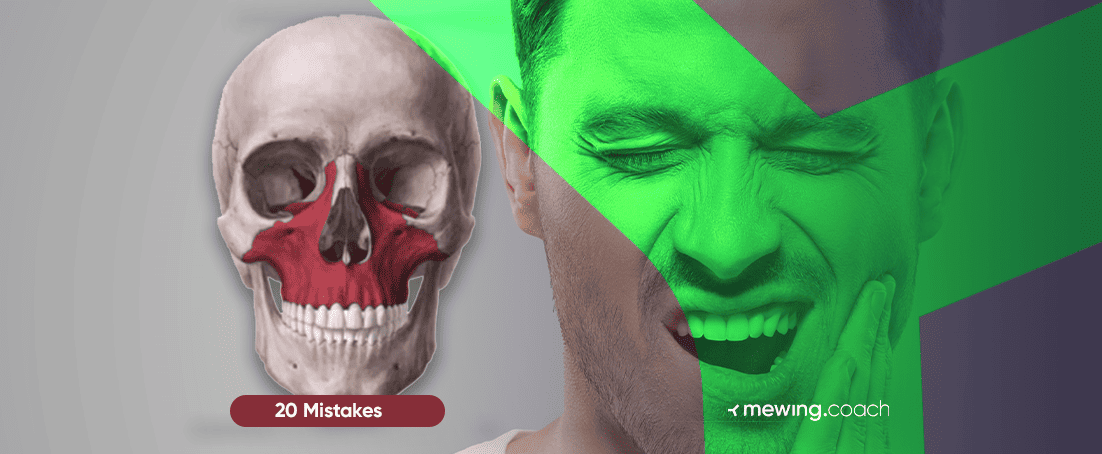
A correct tongue posture equals a proper mewing posture – any other way of doing mewing is wrong! On the other side, improper tongue posture resulting in mewing mistakes can damage your facial structure.
On that note, in this article, you’ll read about:
-
📝What mewing is
-
📝Some neat mewing exercises
-
📝The worst mewing mistakes you could make
-
📝How to establish whether you’re mewing properly.
So, what are you waiting for? Let’s learn how to mew correctly and get that razor-sharp jawline you’ve been dreaming about!
Mewing Exercises and Practices: A Safe and Effective Way That Works
Though the mewing method may be a new concept to you, its beginnings date to the 70s, when British orthodontist John Mew put together a jaw, tongue, and neck muscle exercising routine for his son.
Mewing has come a long way since then, becoming a world-renowned practice incorporated into workout apps, such as Mewing.coach, which we’ll talk about more later.
The basic concept of mewing is in the distinctive positioning of the tongue, where the tip of the tongue is in light contact with the roof of your mouth. The goal is to activate the tongue muscles (such as the buccinator) and improve the jawline’s strength and positioning – unlocking numerous potential mewing benefits.
By applying even pressure on your palate, you’re forcing your jawline and entire facial shape to change. It works similarly to the AGGA appliance but takes way less time and doesn’t cost a dime!
What Are The Downsides of Wrong Mewing?
The start of the journey is the most important thing when it comes to mewing. Thus, before you develop an improper technique and start mewing wrong, make sure to at least download our app and see how mewing works and how to mew properly.
Some of the risks associated with improper mewing are:
- Excessive teeth grinding
- Masseter hypertrophy
- Pushing your teeth outward (a.k.a. buck teeth)
- Weaker submental area – this is a condition that may result in increasing the fascial space between your neck and head, additionally weakening the muscles in this area.
So if you feel uncomfortable and think that mewing hurts – you are doing something wrong, or you’re probably mewing too hard.
You might be subconsciously applying too much pressure and surpassing the regular mewing concept – entering the slippery field of hard mewing.
Read further down to discover what you can do to surpass and mitigate the side effects of mewing.
Prevent Failure and Ensure 100% Mewing Success
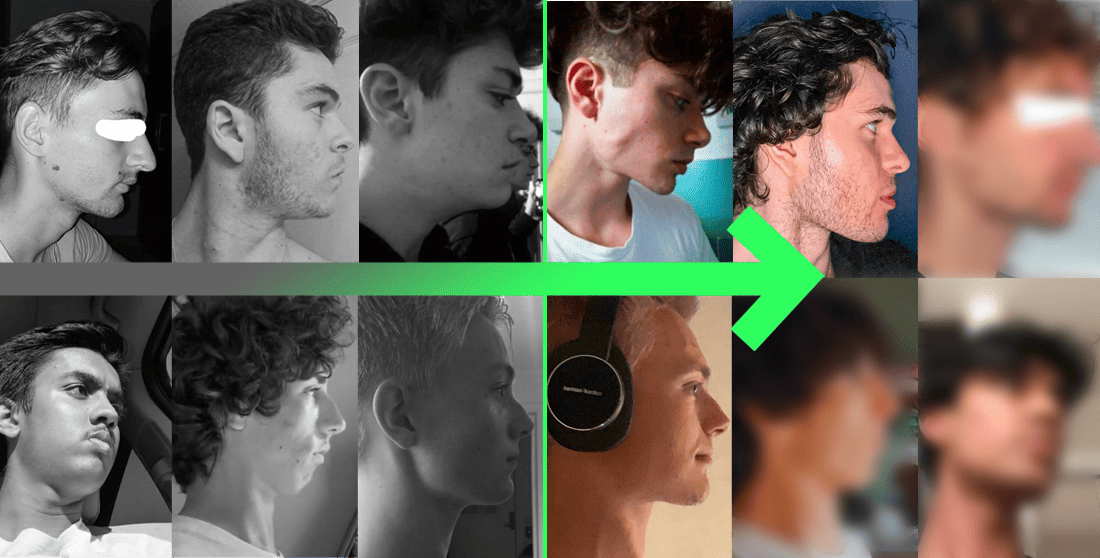
If you want to gain a positive experience and avoid surgeries and doctor consultations that cost a small fortune – our free-of-charge Mewing.coach app can help you avoid making the infamous mewing mistakes.
Before you start mewing, our Mewing.coach insists on getting to know you better – who you are, your age and sex, your eating habits, and your goal. Based on your answers, our app will curate an exercise plan comprised of daily mewing exercises.
You can easily incorporate this plan into your daily routine since it takes just about 20-30 minutes on average. Plus, all the work is done with your mouth closed, meaning you can exercise anytime and anywhere – at school, work, or while driving!
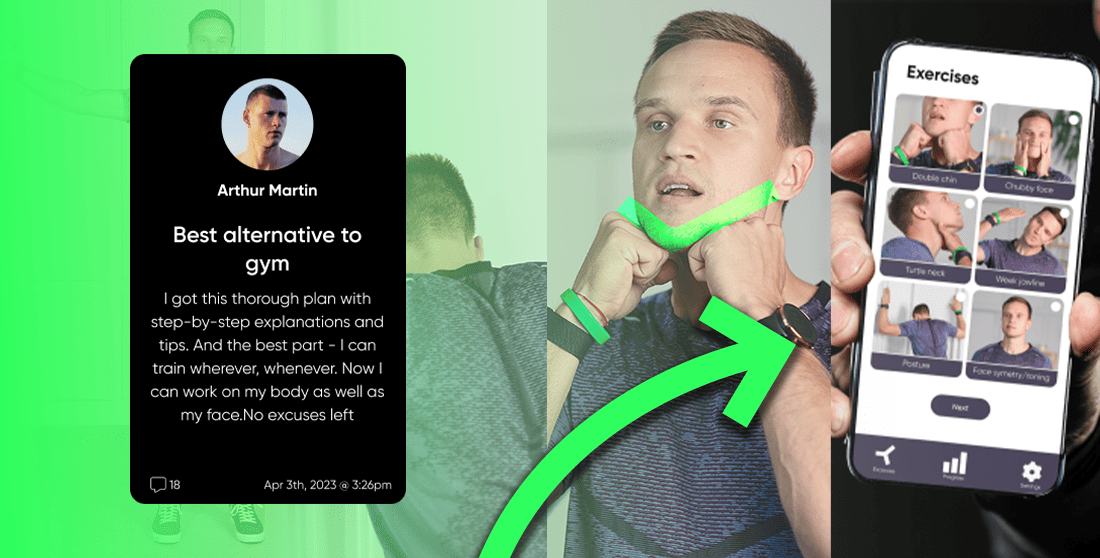
Aside from learning how to mew correctly, you’ll have access to video tutorials to guide you on your journey.
At the end of each workout, you’ll be able to express yourself and share your experience with the app so far, explaining:
- Whether it was useful
- Whether you need additional clarification of a specific point of the mewing practice
- Whether it’s already becoming a habit for you.
This is how our Mewing.coach app always fits your needs, whether you’re a rookie or a mewing prodigy. It definitely adds to the reason so many satisfied users are joining in this global trend and mitigating the mewing side effects left and right!
Can Mewing Ruin Your Face: The 20 Worst Mistakes You Could Make
Mewing is a double-edged sword – if done right, it can align your bones and muscles down to the neck; if done wrong, it can ruin your face for life.
It’s important to know the top 20 mistakes that can lead to a misaligned face and overall asymmetry:
1. Applying Pressure Unevenly
Not applying pressure evenly is one of the most common mewing mistakes that everyone makes – whether a beginner or more experienced mewer. This can often happen due to losing grasp of the muscles you should be activating and applying too much pressure and forcing the exercise out of you instead of ‘going with the flow.’
In this manner, practicing mewing and tongue chewing can be of paramount assistance. Tongue chewing is best practiced with chewing gum. You are stretching different muscles by experimenting with different positions with your tongue while ‘chasing’ the gumball.
By doing this, you can build strength in the overall tongue surface instead of applying too much force simply with the tip of your tongue.
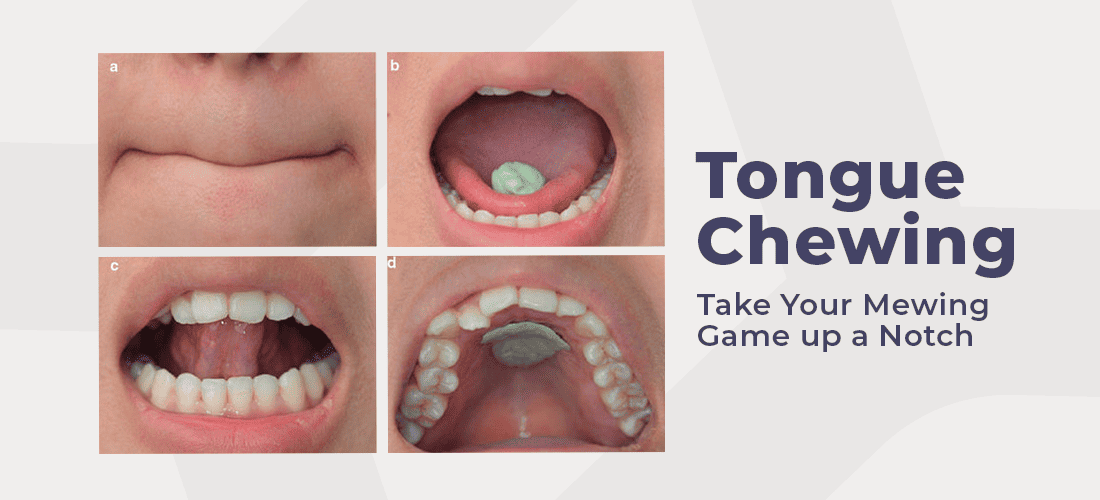
2. Engaging Only the Tip of Your Tongue, While Neglecting the Back Third
This common mistake adds to the previous one – adding too much pressure. And since our tongue’s tip is the most exercised part, naturally, making this mistake is inevitable.
Exercising the back of the tongue can often be uncomfortable, but you must start doing it to engage these muscles and do mewing properly.
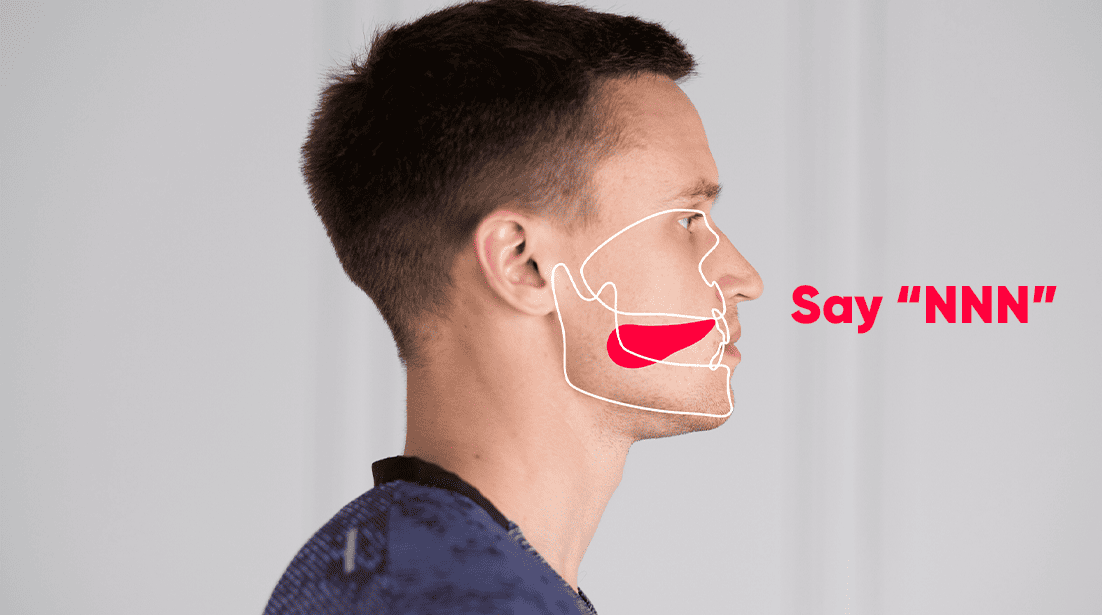
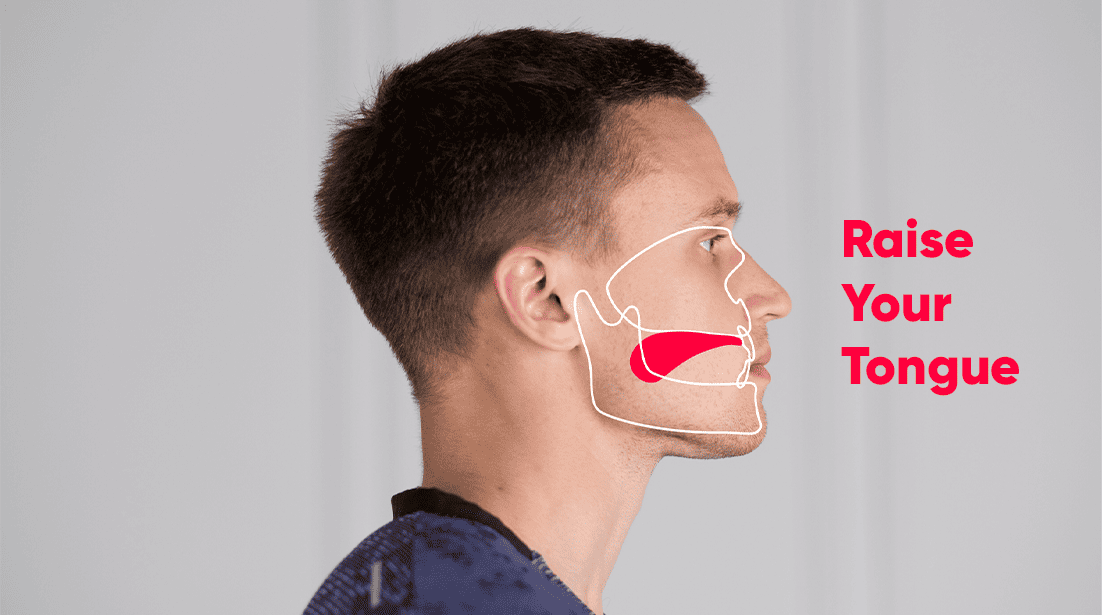
Neglecting the back third of your tongue can result in improper oral posture as well as the phenomenon called ‘buck teeth,’ as you’re simply pushing your front teeth and the front upper palate forward.
3. Not Focusing on the Hyoid Muscles
As you may have concluded so far, proper mewing lies in the possibility of engaging as many muscles as possible instead of mimicking the tongue posture while overburdening specific areas (such as the tongue).
Instead, the proper tongue posture implies engaging the muscles around the neck and the submental area. It should be imagined as moving the hyoid bone and muscles upwards, pushing to the upper palate. Or, to put it simply – consider doing the opposite of yawning, and you should understand which muscles we’re discussing here.
4. Only Using the Tip of the Tongue

Solely engaging your tongue tip isn’t sufficient for a productive mewing session. It’s always best to activate the entire tongue and cover the palate without allowing air flow when mouth breathing.
Without repeating ourselves, check out the proper tongue posture once more, and read about the focusing and breathing exercises that can help you achieve it.
5. Totally Neglecting The Tip
Many people when they first start mewing make the mistake of neglecting the correct positioning of the tongue tip. Correct tongue tip posture should mean the tip of the tongue is flattened on the roof of the mouth behind the front incisors without touching them. Although this is seemingly quite simple, many people experience problems while attempting it.
6. Not Keeping Your Lips Sealed
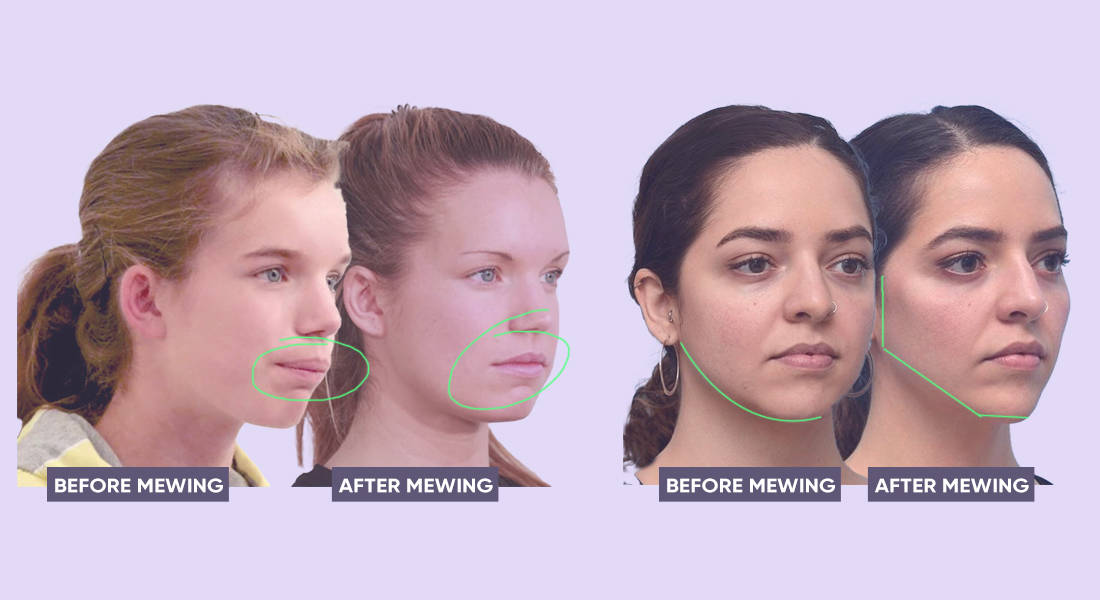
We’re constantly nagging about the tongue posture, but the mewing position also consists of the part where you should do everything with your mouth closed. This is also helping and encouraging you to breathe through your nose – another essential part of the mewing technique.
Opening your mouth will let air slip through, affecting other important aspects of the mewing technique.
7. Not Paying Attention to Poor Body Posture Mewing
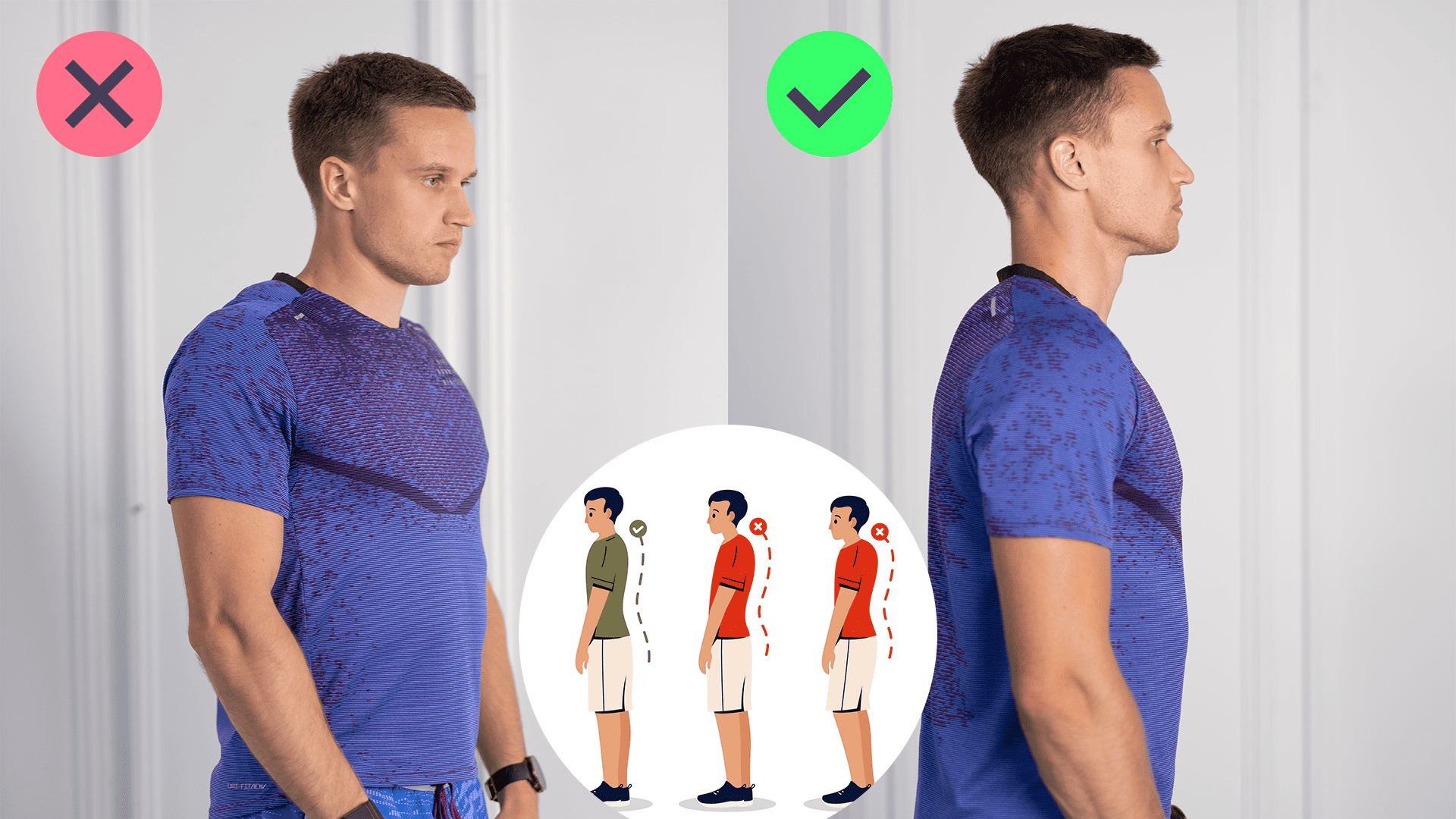
If you notice a sudden shift in terms of feeling pain in the neck area or the spine, this might also result from improper mewing. All the muscles and joints in our body are closely connected, which is why every one of us has our own distinctive walk and standing and sitting posture.
When it comes to poor body posture, mewing mistakes can seriously damage this internal connection between the muscles. For example, you may develop a forward head posture from wrongful engaging and pressuring your neck muscles.
The McKenzie chin tuck is a handy way to fix this, but there are other possibilities you can check out on our app.
8. Teeth Touching
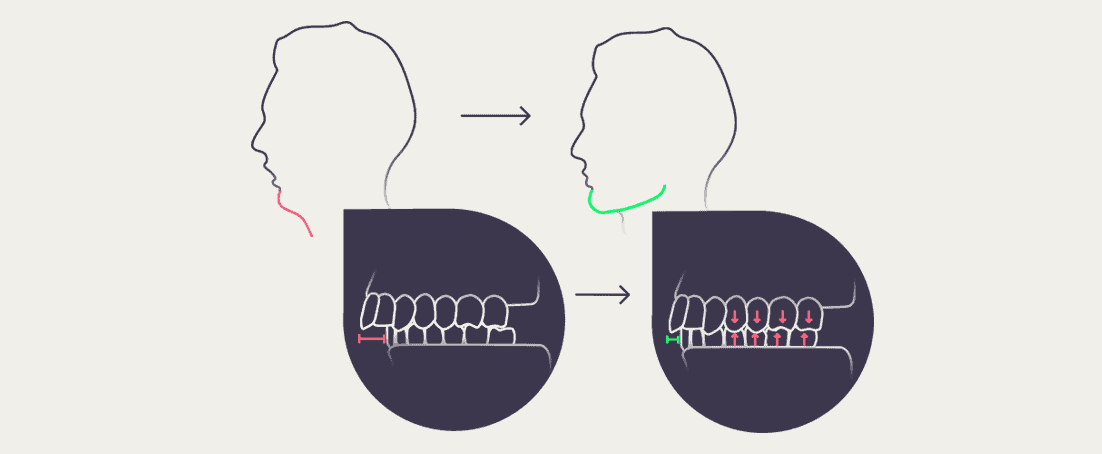
When your mouth is closed, your upper jaw teeth constantly touch the teeth from the lower jaw. This shouldn’t be the case if you’re mewing the proper way. Instead, it should only be the tip of your tongue touching the maxilla while your bottom teeth are just behind, without them ever touching.
If you can’t imagine exactly how teeth should look when the mouth is closed in the mewing technique, visit this link and find out.
9. Teeth Grinding (Also Called Bruxism)
Bruxism is a trait commonly associated with people with OCD or individuals dealing with anxiety.
Unluckily, wrongful mewing can also be the cause of this uncomfortable habit. This is due to the improper positioning of your jaw, which can damage the perfectly good posture of your teeth.
So if you never used to grind your teeth and started doing it suddenly, it can definitely be connected to your mewing.
10. Unnecessary Pressure on Your Teeth
Applying too much pressure to your teeth can make additional gaps and spaces by pushing them forward. Sometimes, you can also end up with broken teeth along the way!
Whatever you do, don’t ever consider your tongue posture to be correct if it’s touching your teeth.
11. Preventing Airway (Especially Those Who Are Mouth Breathers)
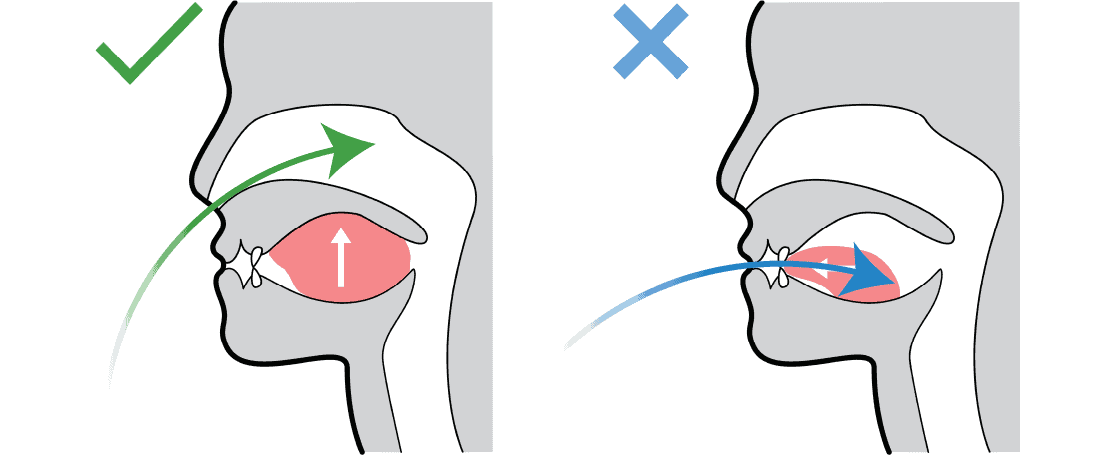
Most people can normally perform nasal breathing while mewing – only some people, like individuals with receding jaws, can experience difficulty doing it.
To put it simply, you can experience shortness of breath if you’re pushing the soft tissue of your upper palate instead of applying pressure on the hard palate. This means you’re pushing against your throat and not your maxilla – and all that pressure is in vain since you’re not really achieving anything.
So if you’re experiencing nausea, headaches, or shortness of breath, ensure you’re pressuring against the correct area of the hard palate.
12. Improper Suction Effect
Our jaw is shaped in a specific way not just because of our genetics but also due to the improper suction effect and swallowing technique. We are born with it, but we can definitely change that fact.
The incorrect suction hold in this case would be where you pressure your entire mouth to do it instead of just focusing on the space between your tongue and your upper hard palate.
You should place your tongue in the normal mewing position, straighten your back, and maintain your lip seal. When the saliva (spit) begins to form, let it concentrate in that same spot, and just roll it down your throat without using your mouth and face muscles.
13. Inconsistent Mewing Technique
What results can you see from a single month at the gym? Probably a little bit – but they won’t mean anything if you don’t keep up with the tempo.
The same goes for mewing, which is the mindful gym technique for your jaws and neck.
In order to achieve brilliant and visible results – you must really engage yourself in consistent mewing. Do whatever you need to do in this manner – whether it’s setting up alarms and reminders or implementing a piece of gum or another similar object in your mouth as a reminder.
In the end – you’re reshaping your jaw, which is made out of bones, not simply the muscles made out of soft tissue.
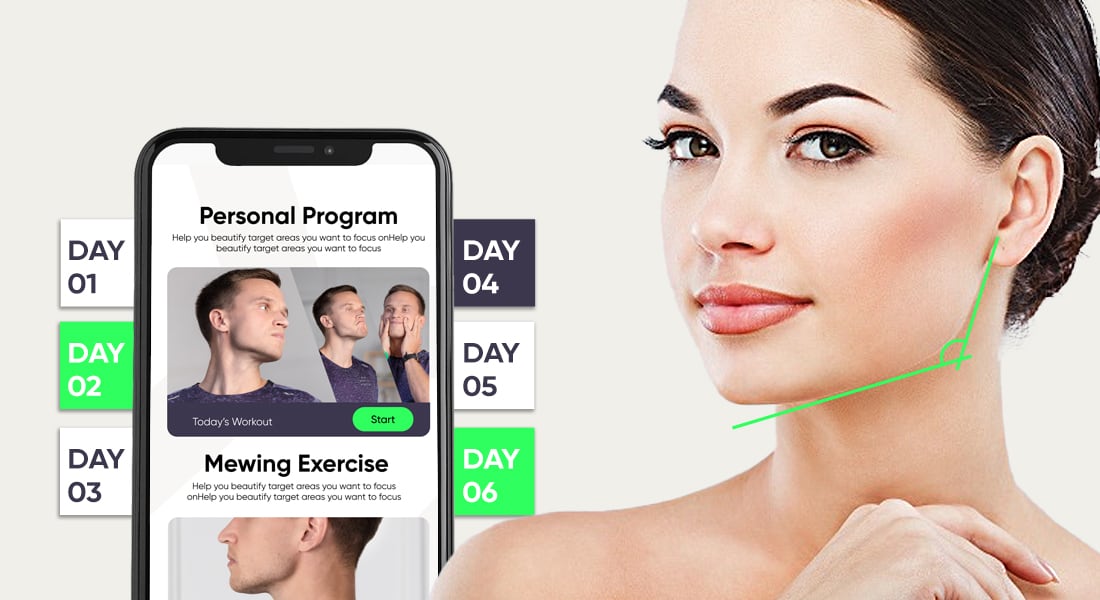
14. Not Swallowing Correctly
Are you thinking, “is there a wrong way to swallow”? Oh yes, there sure is. As a matter of fact, 85% of the entire adult population cannot swallow correctly, which is a phenomenon inherited from our earliest infant days – breastfeeding and thumb sucking.
Most of us never engage the hyoid bone muscles and the back of the tongue, which is what you’re going to learn alongside the proper mewing technique.
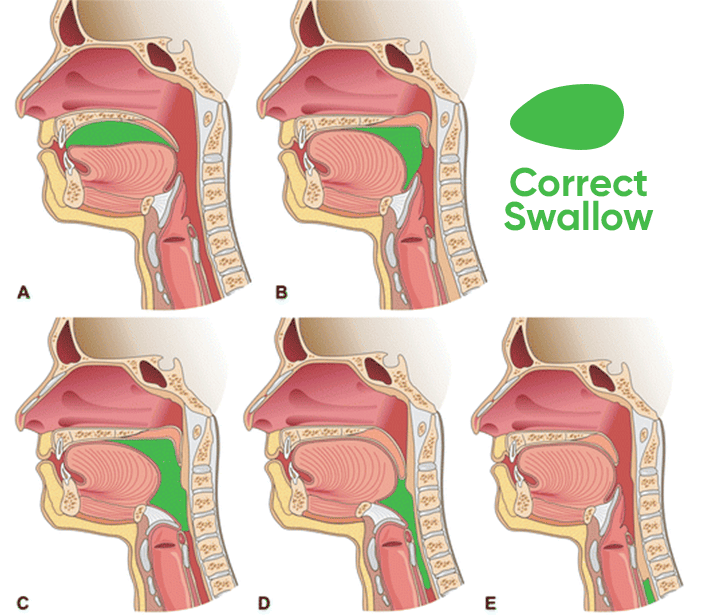
15. Not Picking The Right Time to Mew
One of the most common mistakes people make is thinking that mewing is your regular exercise and you should include it in your daily routine.
No. Once again – you’re reshaping bones, and in order to actually do it, you must rearrange your nerve capacities into developing the mewing tongue posture as your common tongue posture – even while you’re sleeping!
16. Weakening your Submental Area
If you’re doing the tongue posture wrong, you might additionally weaken your hyoid and neck area muscles, as you’re probably engaging your tongue and upper jaw too much.
17. Jumping Straight to Hard Mewing
Hard Mewing is not for beginners and people who haven’t mastered the proper mewing technique. Applying too much pressure while doing an improper tongue posture can be devastating and ruin your entire face symmetry.
If you’re interested in how to do hard mewing, our Mewing.coach app can guide you through the process without any unnecessary jaw pain.
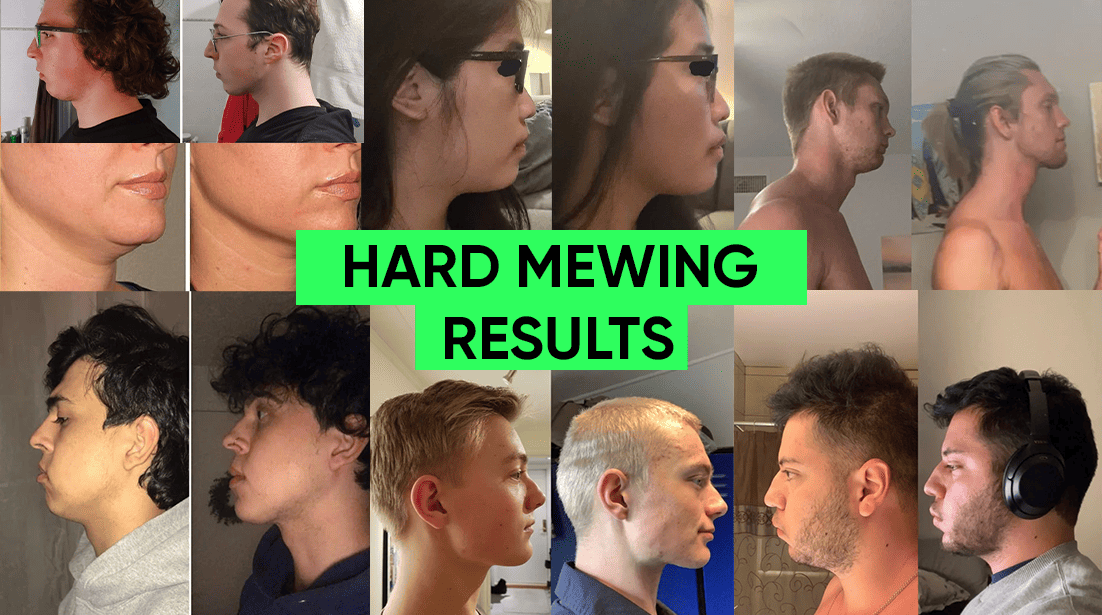
18. Trying to Mew and Talk at the Same Time
This is another impossible thing to do since each different pronunciation acquires a different mouth and tongue posture.
Implementing mewing while sleeping or working in silence is just about enough!
19. Biting and Pinching Your Cheeks
Though you may think this will help push your cheeks downwards – you’ll only end up with vulnerable scars within your mouth. If you want to do this exercise properly – you can do it in addition to your mewing practice because it’s definitely not part of the proper mewing tongue posture.
20. Pushing Yourself Too Much Before Knowing Correct Tongue Posture
Reshaping your face can be done up to a certain point. So, get to know your face shape, and don’t expect to change it drastically. In the end, mewing is an oblique technique – not the actual equivalent of surgery.

21. Expecting Instant Hunter Eyes From Mewing
Some people start mewing mainly to get the deep-set look known as hunter eyes. A common mistake is thinking tongue posture alone will change your eyes quickly. In reality, results take time and often need complementary exercises. For safe techniques, check out this hunter eyes tutorial.
How To Know If You’re Mewing Correctly
By now, you should’ve understood the correct posture of the tongue and how crucial it is in the concept of mewing.
However, it’s always best to double-check your posture if it’s your first time mewing. So, make sure your tongue rests on the palate without touching the back of your teeth.
Even if you master this technique – practice always makes perfect. And great results can be achieved and sustained only by correct and consistent mewing.
You can even consider implementing chewing gum in your tongue practice since mewing and tongue chewing has proven to give paramount results.
Some Final Thoughts on Can Mewing Ruing Your Face
If done the right way – mewing shapes the jawline to perfection! Bringing out those hollow cheeks and defining not only your jawline but your whole body posture can be simply done by incorporating the proper mewing routine into your daily life.
As you might conclude from this thorough article, mewing can be a double-edged sword. But there isn’t a single mewing mistake on our list that can occur if you master the proper tongue position before you start mewing.
Give a bit more of yourself into the practice, follow our app’s video tutorials, and use your entire tongue. The only thing standing between you and success (a better jawline in this case) is yourself!




